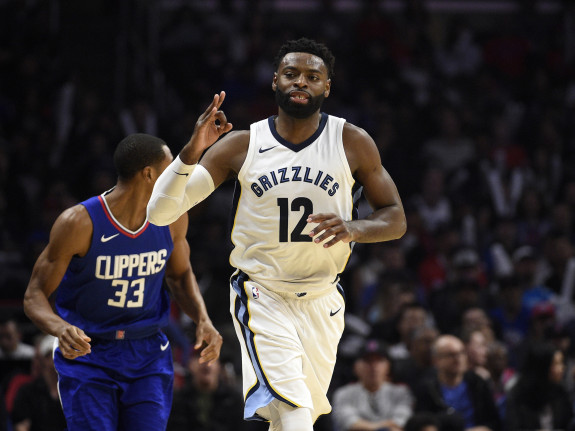This article was originally published on February 15, 2018.
In this post, we investigate shooting guards and their performance during the 2016-17 season. For this analysis, we selected the 51 players who played at least 30 games at the shooting guard position under standard FanDuel contest rules. Interestingly, Giannis Antetokounmpo and James Harden qualified as SGs for the 2016-17 season despite acting as their teams’ respective point guards for many games. Let’s dive right into the data:

Qualifying SGs ranked by Pts/$K.
Interestingly, we see a wide disparity in Pts/$K from Lou Williams at 4.88 Pts/$K down to Norman Powell at 3.60 Pts/$K. James Harden ranked 17 out of 51 with a Pts/$K of 4.57 and Giannis Antetokounmpo ranked 29th with a Pts/$K of 4.44. Gary Harris led all SGs in “great” performance percentage, hitting the 5.0 Pts/$K mark in 50% of his games during the 2016-17 season. Next, we decided to group the SGs by salary tiers and graph the results of Pts/$K vs. Average Salary. Tier 1 consisted of just 3 players: James Harden, Giannis Antetokounmpo, and DeMar DeRozan. The following graph shows Pts/$K vs. Average Salary for Tier 2 players:

Tier 2 Shooting Guard Pts/$K vs. Average Salary
The distribution amongst this tier of players is generally evenly split. Generally, the Pts/$K values for this tier are higher on the average than other players at other positions (regardless of position). Interestingly, the 2 Boston Celtics in this tier are the most overpriced players, and both of their Pts/$K values fell below 4.4.

Tier 3 Shooting Guard Pts/$K vs. Average Salary
We see a clear trend in the tier 3 SGs – as Pts/$K is directly proportional to Average Salary. As we have mentioned before, taking the minimum player (or anyone below $4,000) is extremely risky, and based on the data we have seen, we would advise against it when possible. Lou Williams was severely underpriced on the average throughout the 2016-17 NBA season while Tyreke Evans was overpriced throughout the year.

SG Salary vs. Pct of > 5.0 Pts/$K performances
Our findings from the previous graph were confirmed when we mapped salaries and the percentage of games in which salary ranges hit 5.0 Pts/$K. Shooting guards in the salary range $5000 – $5900 hit 5.0 Pts/$K at a higher clip than any other range (in the thousands). We see a spike at $5000, and a gradual decline in 5.0 Pts/$K performances as salary increases. We also see a constant decline in 5.0 Pts/$K performances as the salary decreases towards the $3500-$3900 range. From this, we can conclude that shooting guards that are in the middle tier perform best (ideally from $4000 – $7000).
Stay tuned for NSAG DFS Blog 5: Small Forward Selection, to be posted on Monday, February 19.

Be the first to comment on "NSAG DFS Blog 4: Shooting Guard Selection"